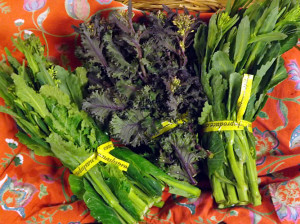
Introducing: raabs!
“I haven’t seen greens at the farmer’s market for weeks — and now suddenly all my favorite farmers are proclaiming the deliciousness of this raab stuff. But what is raab? And how to I eat it?”
First, what are raabs?
Raabs are harbingers of springtime in the Northwest. When the weather starts to warm, plants in the brassica family (which includes kales, cabbages, Brussels sprouts, etc.) send stalks of flowers up to the sky. These structures are called “raabs.”
Why should I love raabs?
Raabs are tender and sweet, because brassica plants produce sugar as anti-freeze during the winter.
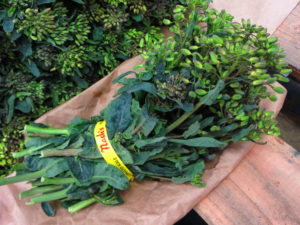
Raabs are fully edible, flowers and all.
How can I eat raabs?
You can eat raabs raw or cooked, and every part is edible — that includes the stalks, the leaves, and the flowers too! Chop your raabs raw into salads, or lightly steam a handful to let the tender texture and the sweetness shine. Drizzle oil on them and briefly grill or broil them. Use them any way you might use kale or asparagus.
Why should I eat raabs immediately?
Raabs are only around for a short time in the spring. As soon as the raab flowers open, we must disk the plants into the ground so they don’t cross-pollinate with any of our seed crops. Also, we need to prep the soil as soon as we can for the next round of crops.
Raabs can be important to farmers because selling them provides the farm with income in the spring, when we have very little else to sell. At the same time, we have a lot of costs in the spring, as we prep our soil, start seeds, transplant seedlings, and repair broken equipment. We love raabs for many reasons!
Let’s take a look at some examples.
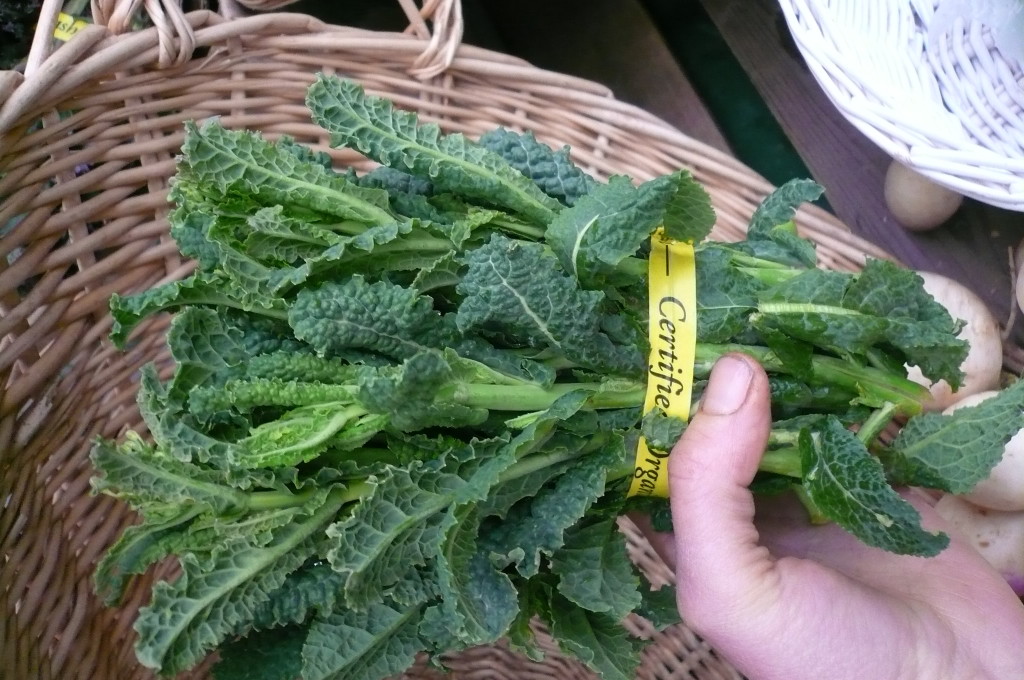
Lacinato kale raab: Kale raabs tend to look like baby versions of their grownup counterparts. In this lacinato kale raab, the little leaves are bumpy and textured like normal lacinato kale. In this bunch, the flower heads are only just starting to emerge.
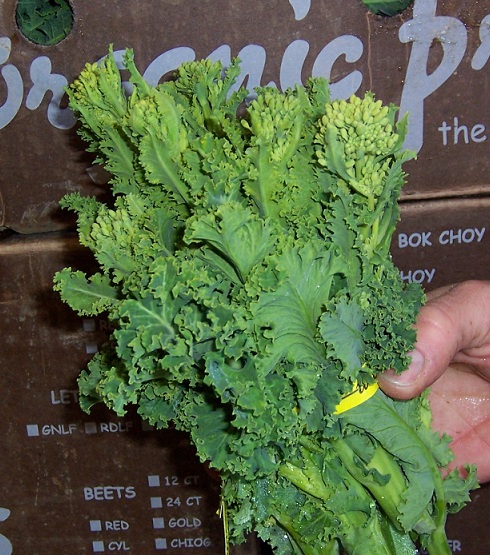
Green kale raab: the leaves and flowers are so tender, and the stalks are super-sweet.
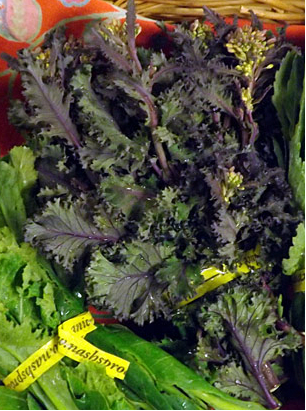
Red kale raab: Here’s a raab that will add gorgeous color to a salad or side dish.
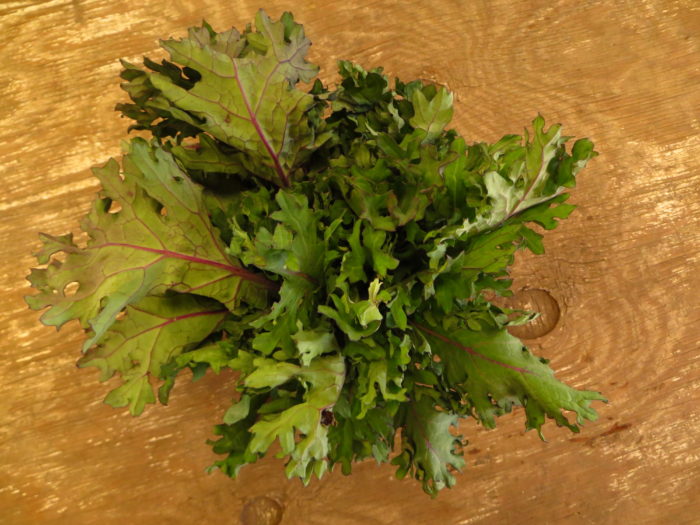
Red Russian kale raab: This tender kale produces delicate baby leaves with its flowering stalks.
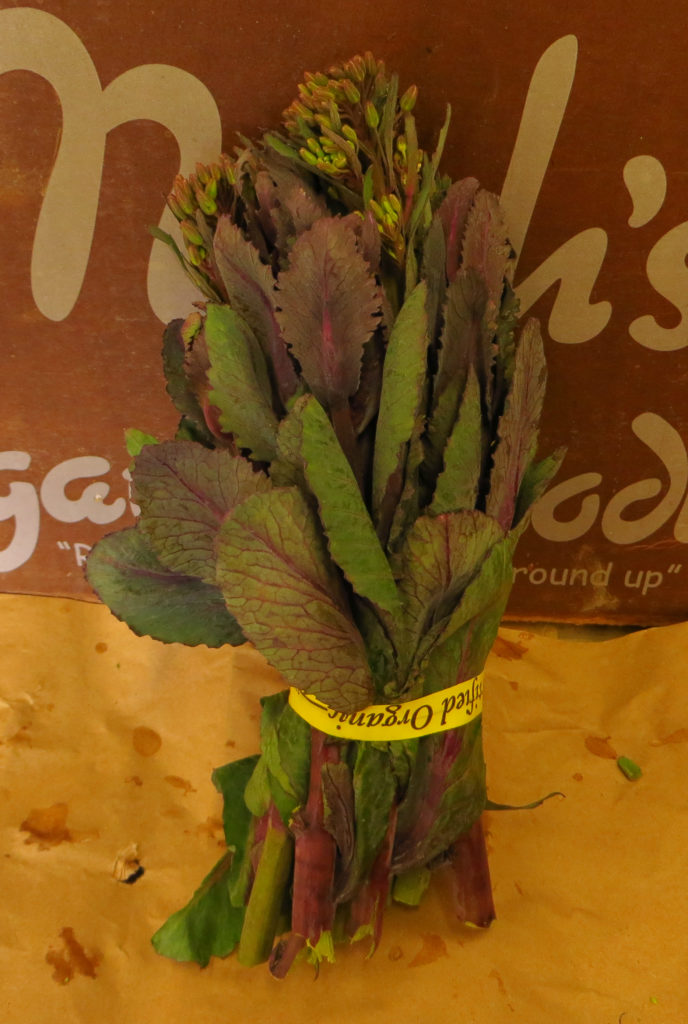
Red cabbage raab: Cabbage raab leaves tend to be rounded and spoon-shaped.
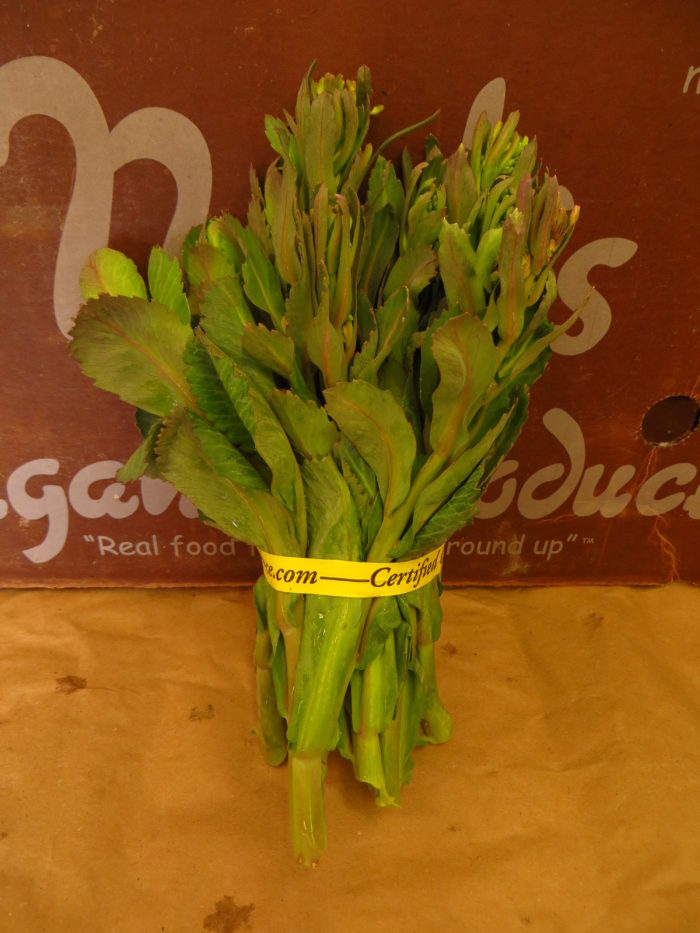
Green cabbage raab: It can be hard to tell green cabbage raab apart from collard raab and Brussels sprout raab, but they’re all worth trying!
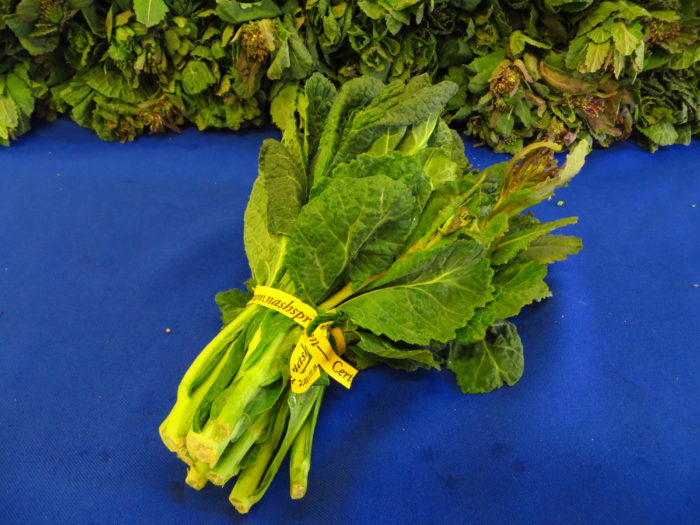
Savoy cabbage raab: Its little round leaves look a bit like small collard leaves with a lacinato-like texture.
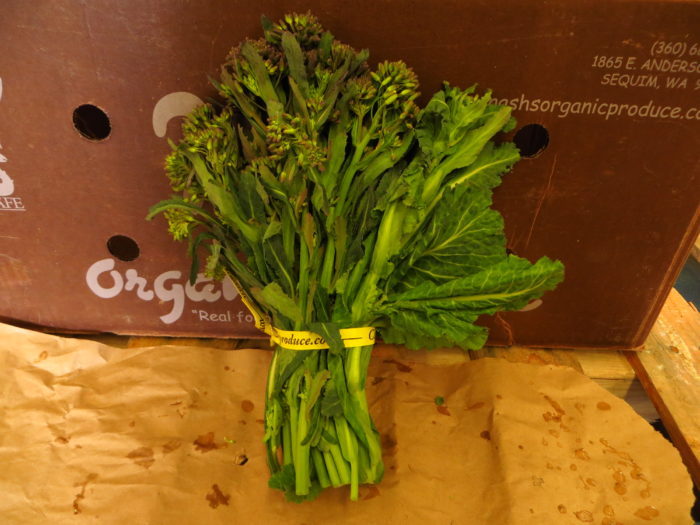
Collard raab: If the leaves on your collard raab are large enough, they start to look like their grown-up versions, just smaller.
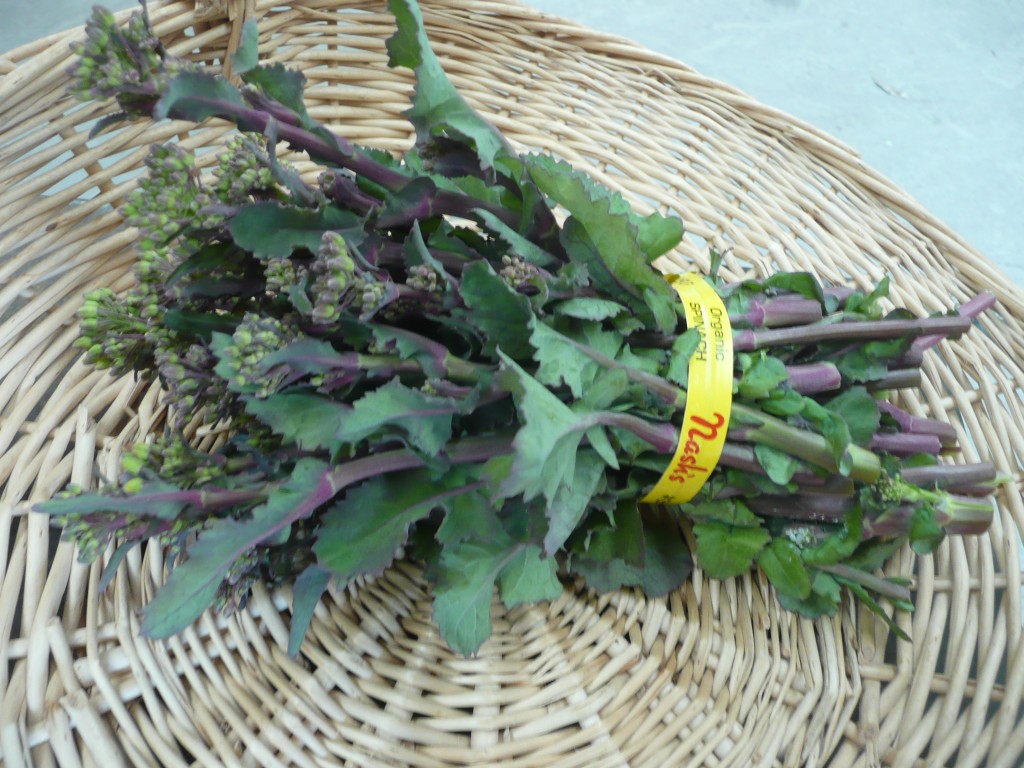
Rutabaga raab can be a little spicy when eaten raw, just like arugula raab — which are both excellent when chopped into salads.
Enjoy all the varieties of raabs before they’re gone!
